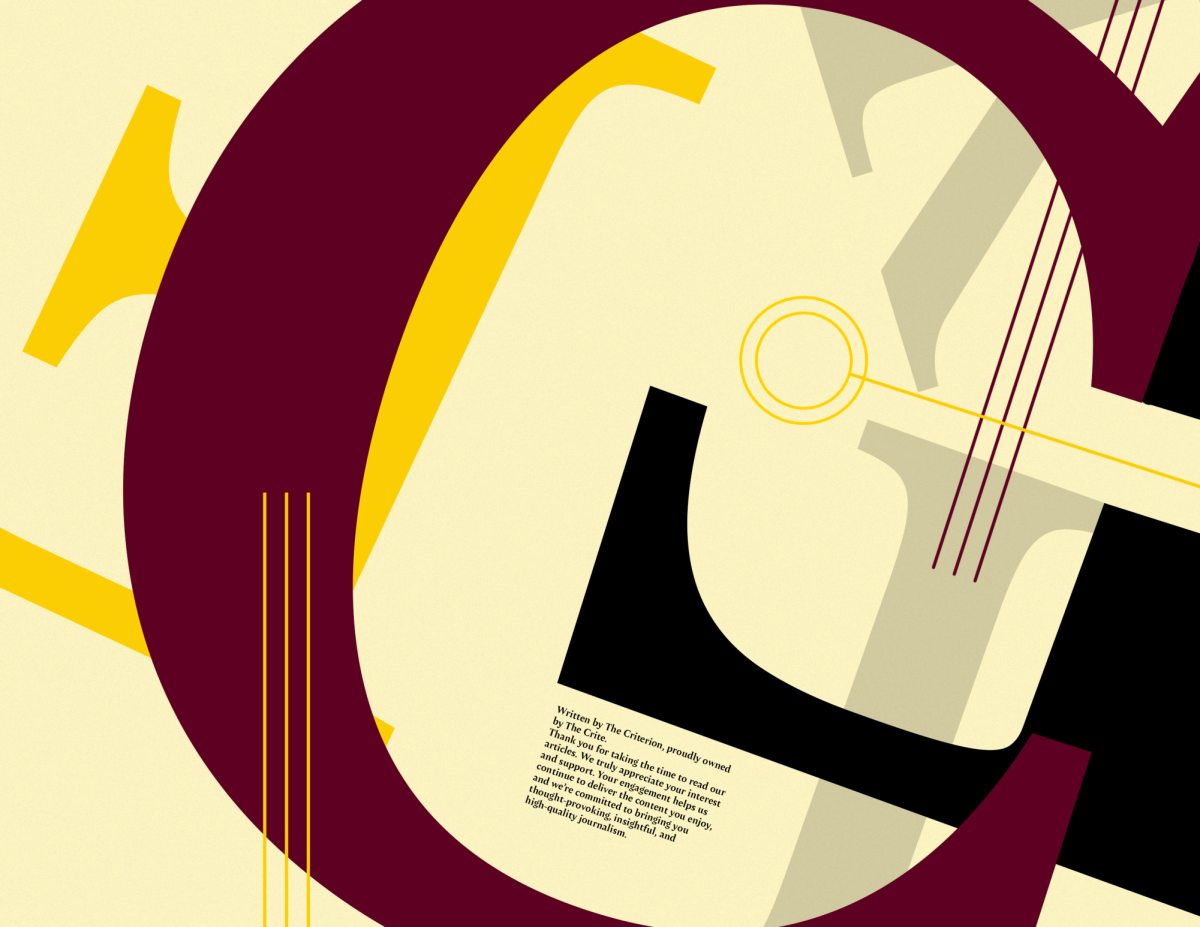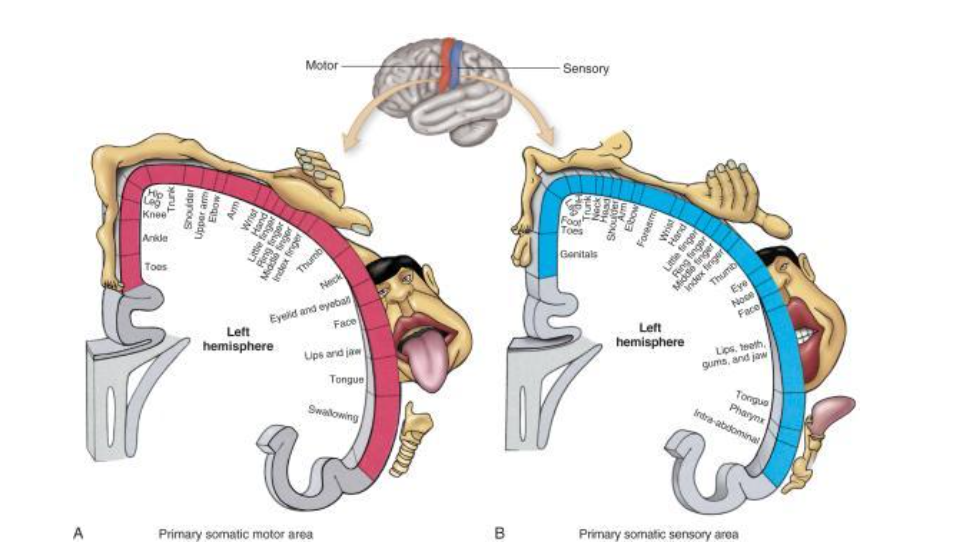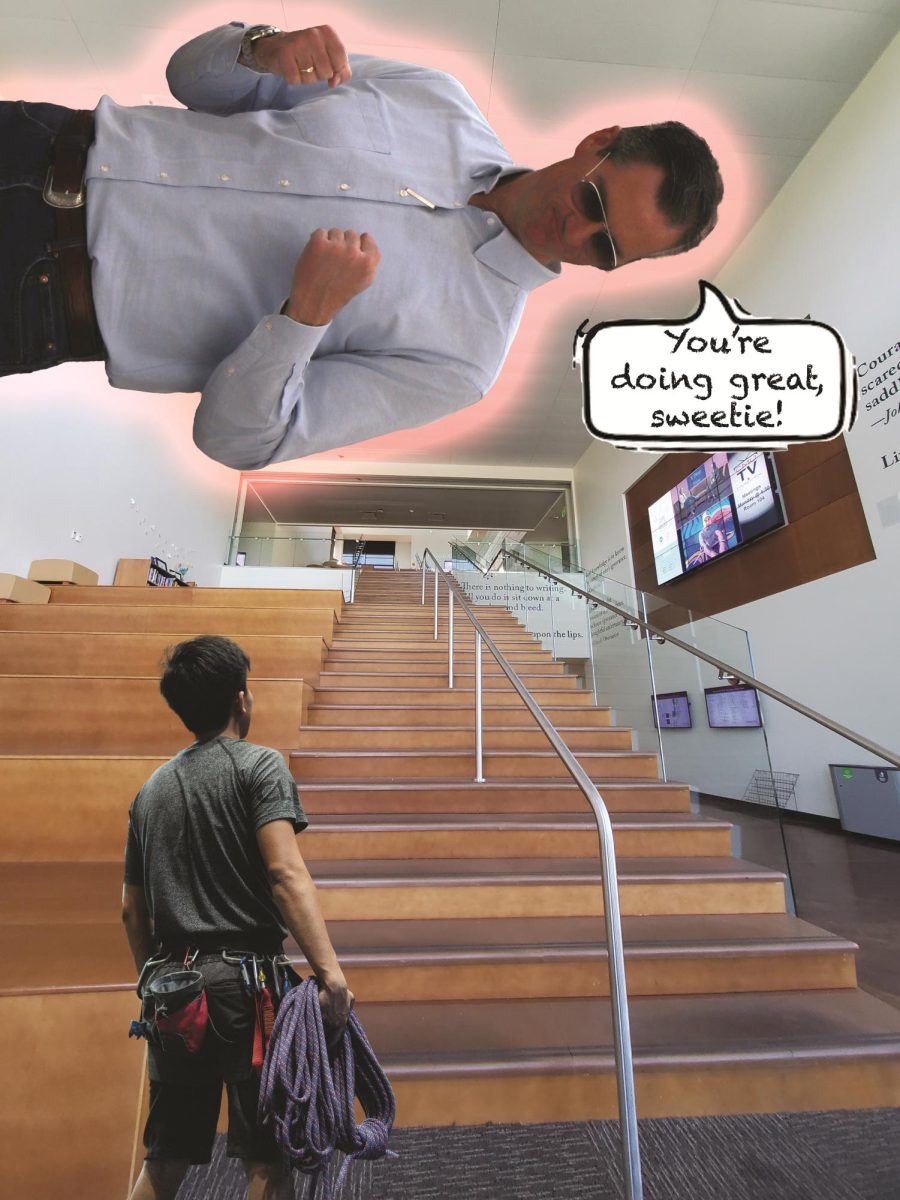Consider this: the same route that you take from your dorm to class every day could have been the very same route that the Stegosaurus once walked (except the Stegosaurus likely wasn’t going to class).
A variety of massive dinosaurs once roamed the Western Slope of Colorado, and Grand Junction was no exception. According to Julia McHugh, Curator of Paleontology at the Museums of Western Colorado, the Grand Valley was home to a number of dinosaurs.
“The most common dinosaur found in the Grand Valley is a giant herbivore called Apatosaurus. Other common dinosaurs in the area include other herbivores like Stegosaurus, Camarasaurus, Mymoorapelta and Dryosaurus, as well as the predator Allosaurus,” McHugh said.
An Apatosaurus had an incredibly long neck and was said to be a total of 69-75 feet in length (from head to tail) and weighing up to 49,000 pounds. Also known was the Brontosaurus, this gargantuan reptile is considered to be one of the largest animals that ever walked the earth.
The Camarasaurus also had a long neck, and ranged from 25-66 feet, and could weigh as much as 62,000 pounds. While not sharing identical proportions, Camarasaurus had a similar appearance to that of the Apatosaurus with its long neck and whip-like tail.
The Mymoorapelta, more commonly known as an Ankylosaurus, was smaller than other dinosaurs in what is now Grand Junction; only growing to about 10 feet in length. However, these brawny creatures wielded a clubbed tail that could deal with serious damage to attackers.
The Dryosaurus was a smaller dinosaur that probably didn’t exceed the dimensions of a modern-day horse. These smaller dinosaurs are believed to have large eyes, which has led many scientists to presume that the Dryosaurus had superb eyesight.
The iconic Stegosaurus was 26-30 feet in length, 9 feet tall and could weigh as much as 6,800 pounds. These creatures–once found across Colorado and Utah–had spikes lining their spines, which scientists assume helped the Stegosaurus defend itself from predators.
And finally, one of the most prominent dinosaurs found in Grand Junction is the Allosaurus. Considered the ‘great-grandfather of the Tyrannosaurus Rex’, the Allosaurus was the most menacing creature that once roamed the valley millions of years ago. This massive predator, which ranged anywhere from 28-40 feet long, had large, sharp serrated teeth which allowed the Allosaurus to attack larger dinosaurs such as Stegosaurus. In many Stegosaurus fossils, there are bite marks in their neck bones that scientists believe were from a hungry Allosaurus.
With all of these enormous reptiles having once roamed the valley, it’s no surprise that Grand Junction clearly is a geological haven to find fossils. Millions of years ago, oceans and deserts made up Western Colorado. The oceans left behind great sand deposits that later would be compressed and turned into sandstone.
Most fossils are found in sedimentary rocks such as sandstone, limestone, or shale. Luckily for paleontologists, there’s no shortage of sandstone in Grand Junction. This sandstone is a commonality across Western Colorado and the large majority of Utah is a utopia for fossils. This means that paleontologists flock to the area in search of dinosaur remnants and other fossils.
“Scientists from around the world commonly visit the Grand Valley area for paleontological research, particularly from the United States, China and the United Kingdom. Paleontologists have been researching the fossils in this area since 1900 when the first scientific expeditions here were led by Elmer Riggs of the Colombian Field Museum (now the Field Museum of Natural History),” McHugh said.
With so many paleontologists flocking to the Grand Valley in search of fossils, it begs the question as to what sorts of remains these scientists have found and continue to find to this day.
“In the Colorado Plateau region (Western Colorado, Eastern and Southern Utah, Northern Arizona, and Northern New Mexico), fossils of dinosaurs, crocodiles, mammals and their extinct relatives are common. Tracks and trackways are also common fossils in the region. This is largely because of the modern desert, red rock landscape that exposes the rocks containing these fossils at the surface, particularly Mesozoic-aged rocks (the “Age of Dinosaurs”),” McHugh said.
While it is pretty mind-blowing to think that the little college town of Grand Junction was once the natural habitat of building-sized reptiles, it is equally as fascinating to consider how different the landscape once was.
It’s difficult to think that Grand Junction–surrounded by the red plateaus and mesas–ever looked any different from the arid and dry landscape we are used to today. However, over the course of hundreds of millions of years, it seems as if Grand Junction hasn’t always been a desert.
“Dinosaur fossils in our region are found in rocks as old as 220 million years and as young as 66 million years, spanning over 154 million years of time. Obviously, the landscape changed greatly and repeatedly during that time. We have a variety of landscapes appear and disappear in the valley over that time, from lush to arid river valleys, sand dune seas, oases, beaches, to shallow seas and even deep saltwater oceans. So, what the area looked like would really depend on how far back in time you are,” McHugh said.
From oceans to deserts to forests, Grand Junction has seen some tremendous changes over the last hundred million years, and with those changes were different dinosaurs, and thus, different fossils.
“The oldest dinosaur fossils in the area are found in the Chinle Formation (Late Triassic Period). These are dinosaur tracks of both small and large-bodied predatory dinosaurs. Body fossils of these types of animals are found more commonly in Utah, Arizona and New Mexico. In the Jurassic Period, large sand dune seas covered western North America in the early and middle parts of the Jurassic. We have a few footprints and a very rare fossil of a small crocodile-relative (Entradasuchus) from this time, but not much else,” McHugh said.
The Late Triassic Period is the oldest period of time that fossils are being found, but it was the Late Jurassic Period that most fossils have been found.
“In the Late Jurassic Period, we find a lot of dinosaur fossils – including the icon Stegosaurus (State Fossil of Colorado!), long-necked Apatosaurus, and predatory Allosaurus. In the Cretaceous Period we see the Western Interior Seaway advance and retreat many times, creating a repeating sequence of beach environments, wetlands, shallow and deep-water environments – all of which produce many fossils,” McHugh said.
“From shellfish, ammonites, sharks and marine reptiles (mosasaurs & plesiosaurs) to dinosaurs, crocodiles and mammals and lots and lots of tracks. The Cretaceous beachfront in Western North America is often called the “dinosaur freeway” because of all the tracks found there,” McHugh said.
While the dinosaurs are long gone, paleontology is a crucial aspect in uncovering our past and learning more about former tenants of the earth, such as the dinosaurs.












